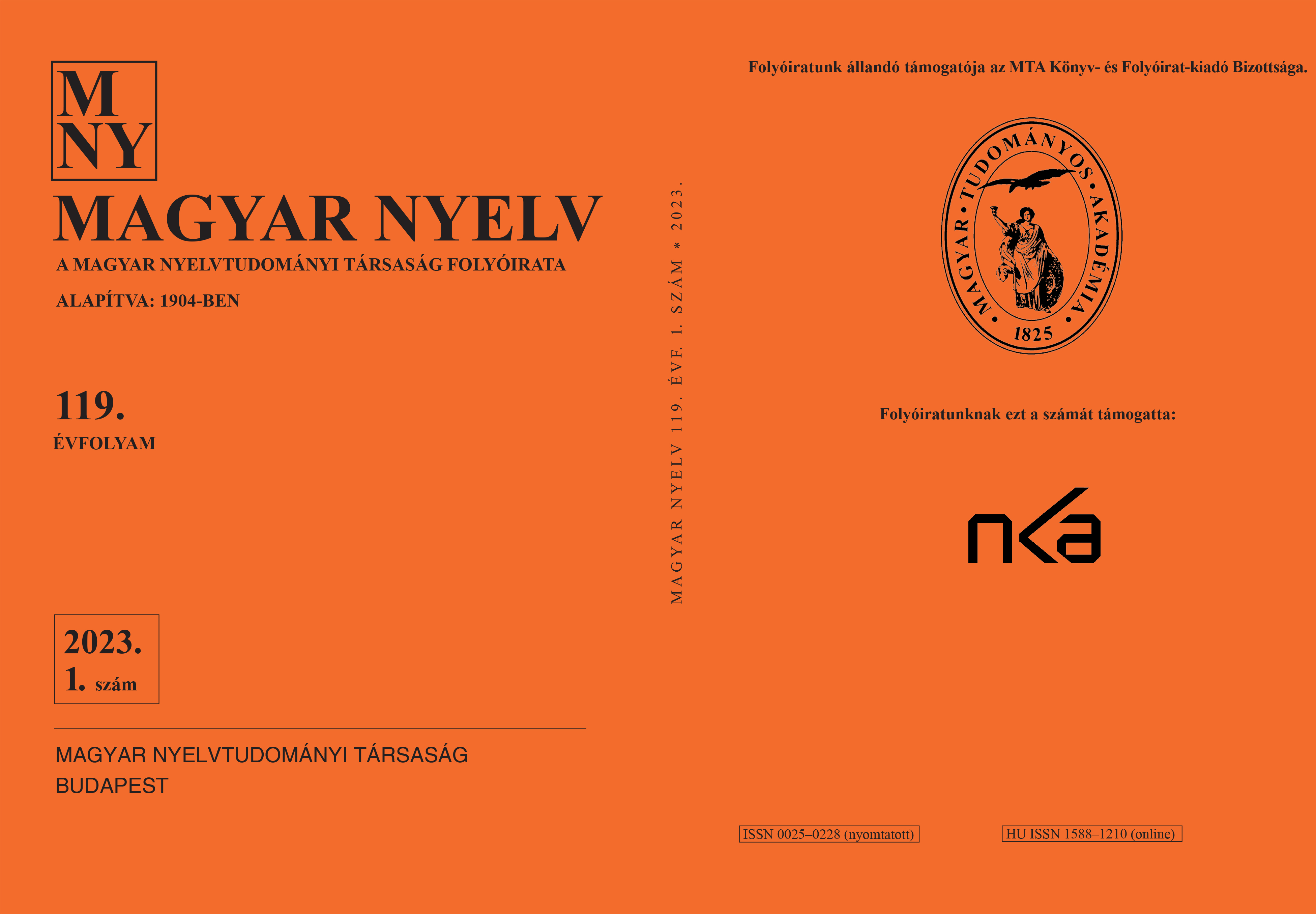Inferring skin colour from voice
A case study on linguistic prejudice
DOI:
https://doi.org/10.18349/MagyarNyelv.2023.1.87Keywords:
linguicism, vernacular, non-standard dialects, linguistic bias, linguistic background, linguistic disadvantages, language attitudes, language stereotypesAbstract
On February 15 2021, news about a bank fraud was published and shared on the Facebook page of Telex.hu. The author reports on a telephone fraud, and the essence of the incident is that the suspect pretended to be an employee of a larger Hungarian bank, trying to obtain personal account data from his victims. One of the people he called was a reader of Telex.hu. She recorded the telephone conversation and sent the recording to the editorial office of the news portal. From the recording that takes 2 minutes and 19 seconds, it becomes apparent that the caller speaks a dialect. The goal of this study is to present the function, characteristics and possible explanations of linguistic prejudices about vernacular dialects and specific linguistic markers through an analysis of the comments that this article received. After describing the theoretical framework, the study presents the background and method of the analysis before discussing the results and their implications.
Downloads
Published
Issue
Section
License
Copyright (c) 2023 István Jánk

This work is licensed under a Creative Commons Attribution-NonCommercial-NoDerivatives 4.0 International License.
Magyar Nyelv is a Diamond Open Access periodical. Documents can be freely downloaded and duplicated in an electronic format, and can be used unchanged and with due reference to the original source. Such use must not serve commercial purposes. In the case of any form of dissemination and use, Hungarian Copyright Act LXXVI/1999 and related laws are to be observed. The electronic version of the journal is subject to the regulations of CC BY-NC-ND (Creative Commons – Attribution-NonCommercial-NoDerivatives).
The journal permits its authors, at no cost and without any temporal limitation, to make pre-print copies of their manuscripts publicly available via email or in their own homepage or that of their institution, or in either closed or free-for-all repositories of their institutions/universities, or other non-profit websites, in the form accepted by the journal editor for publication and even containing amendments on the basis of reviewers’ comments. When the authors publicize their papers in this manner, they have to warn their readers that the manuscript at hand is not the final published version of the work. Once the paper has been published in a printed or online form, the authors are allowed (and advised) to use that (post-print) version for the above purposes. In that case, they have to indicate the exact location and other data of the journal publication. The authors retain the copyright of their papers; however, in the case of an occasional secondary publication, the bibliographical data of the first publication have to be included.



